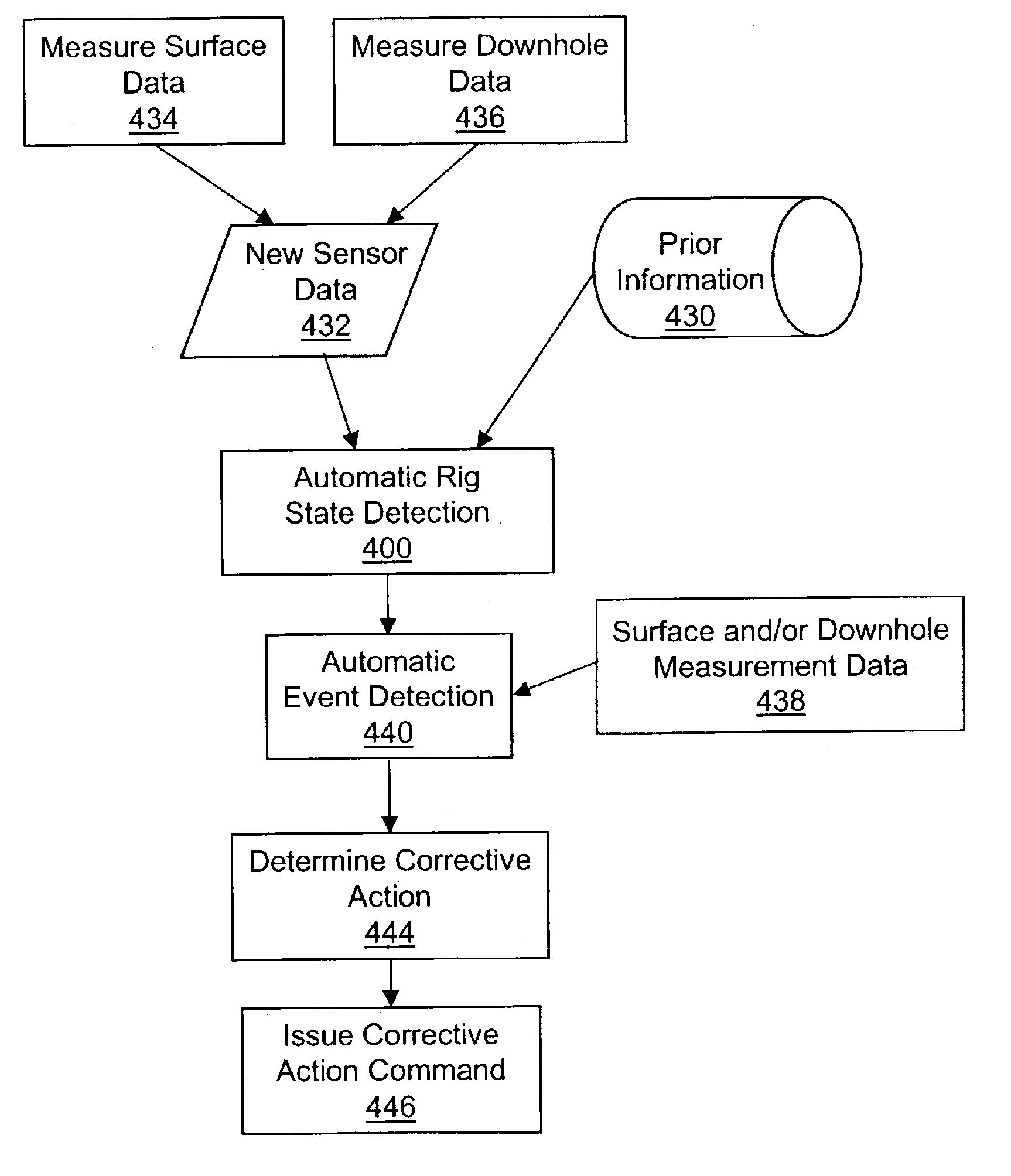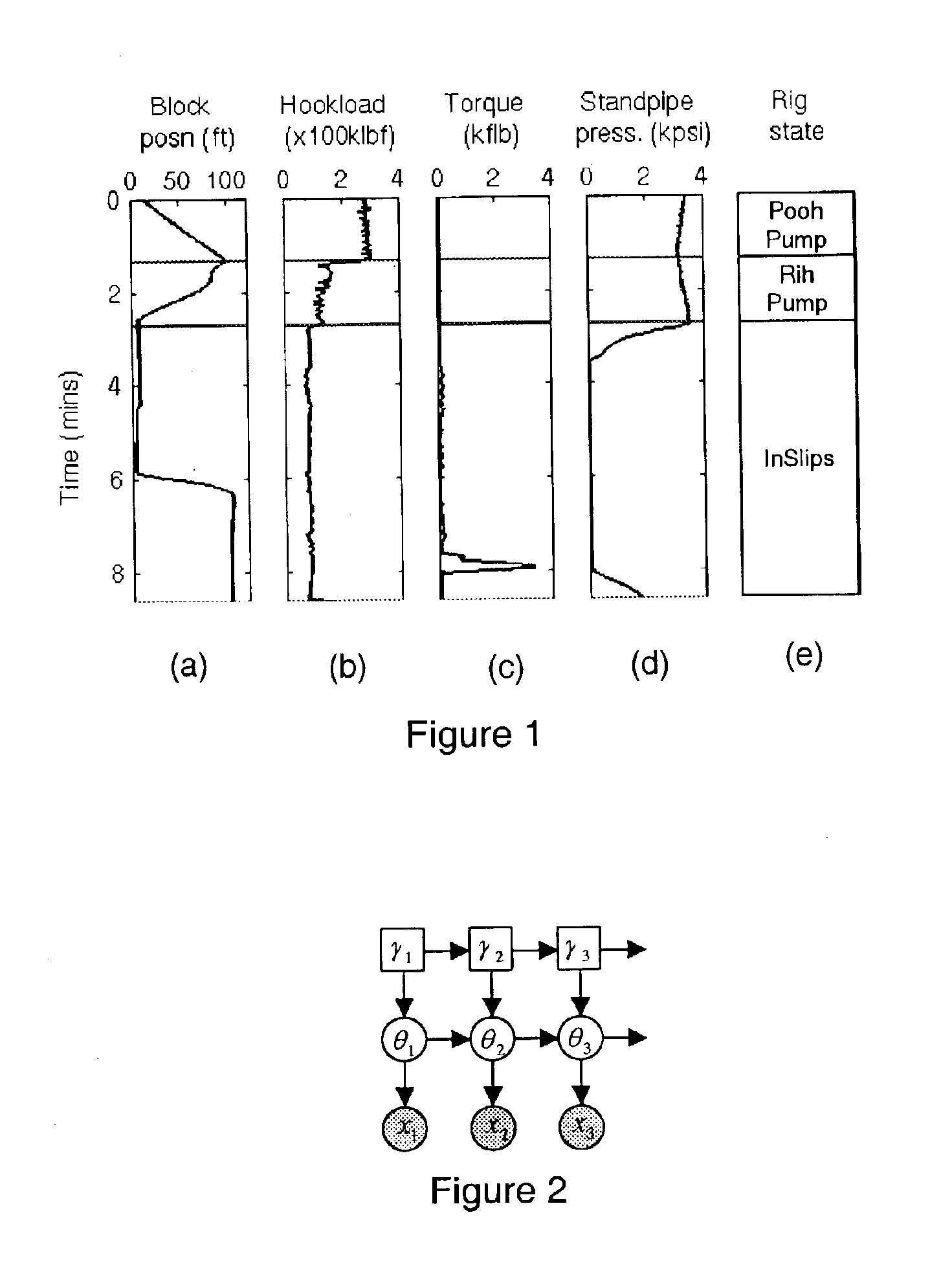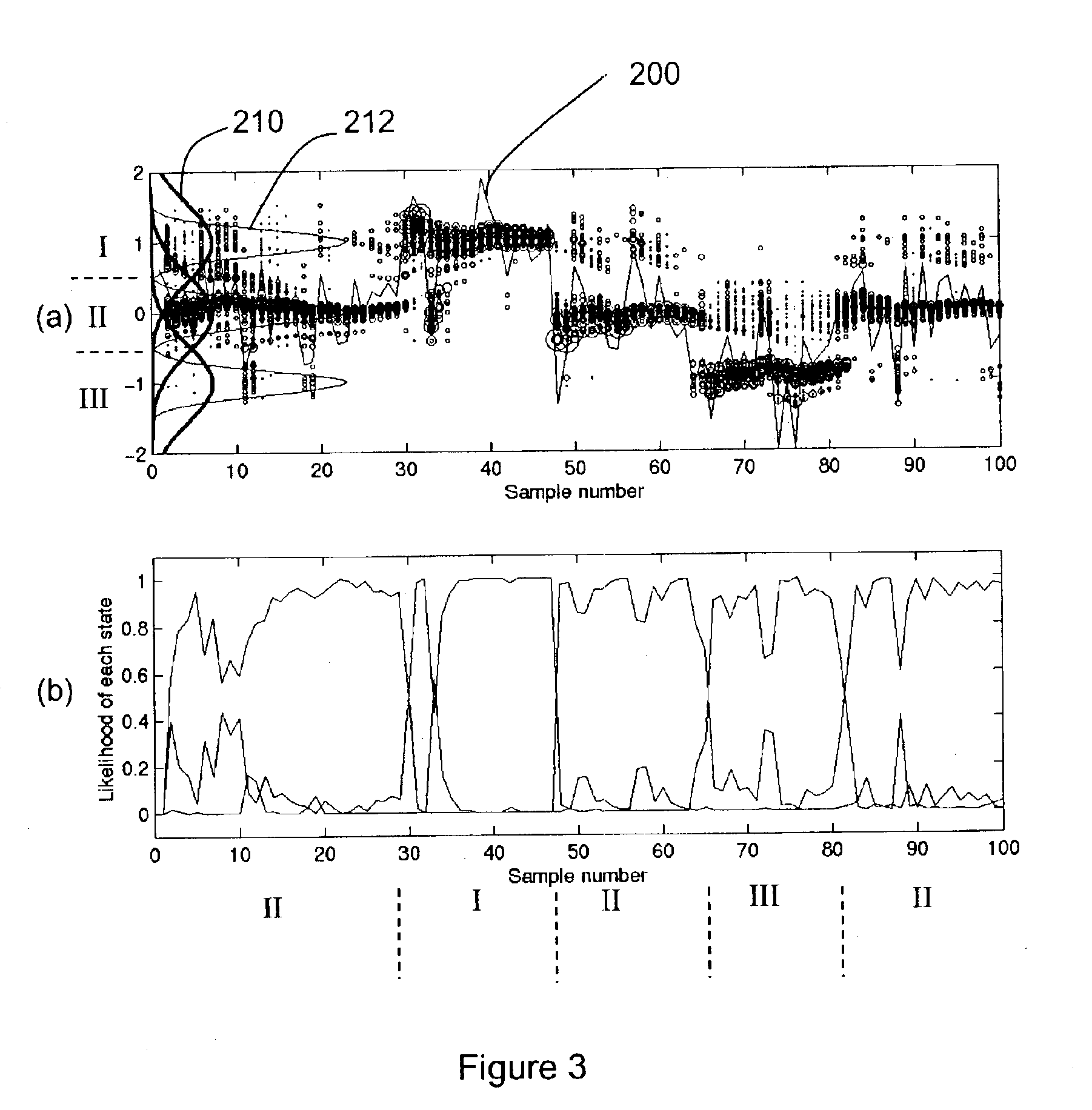Methods and systems for averting or mitigating undesirable drilling events
a technology of undesirable drilling and averting or mitigating drilling events, applied in the direction of probabilistic networks, instruments, borehole/well accessories, etc., can solve the problems of affecting the detection probability, and affecting the drilling process, so as to achieve the effect of averting or reducing undesirable drilling events
- Summary
- Abstract
- Description
- Claims
- Application Information
AI Technical Summary
Benefits of technology
Problems solved by technology
Method used
Image
Examples
example 1
In general a drill bit has almost the same diameter as the borehole itself, so when raising a drill string, the bit acts like a piston and the pressure of the mud below the bit is reduced. This swab pressure can allow reservoir fluids to enter the wellbore if the drill string is raised too quickly, which may lead to a kick or a blowout. Conversely, as the string is lowered, the pressure of the mud below the bit is increased. This surge pressure can fracture the formation, leading to mud loss and wellbore stability problems. At each point along the wellbore, the maximum safe surge pressure and the minimum safe swab pressure can be calculated e.g. from an earth model. Downhole pressure can be measured directly or modeled.
An example system for preventing dangerous swab and surge pressures detects the state of the drilling rig, and acquires downhole pressure and drill bit depth measurement data. If at any point along the wellbore the maximum / minimum safe threshold pressure for the detec...
example 2
The operation of returning a bit to the bottom of the well should be performed gently to prevent damage to the bit and to avoid entering a vibrational mode that may be difficult to exit. An example override system detects the state of the drilling rig and acquires drill bit depth measurement data. When the detected state is one in which the drill bit can approach the hole bottom, the system compares the depth of the bit with the depth of the hole. If the bit approaches the bottom too quickly, the system overrides the driller's control and decelerates the drill string sufficiently quickly such that the bit tags bottom gently.
example 3
Above a certain torque, a downhole mud motor will generally stall, and the bit must then be pulled off bottom to restart rotation. Clearly, it is desirable to avoid restarting the motor in this way. However, downhole torque can be both measured and modeled so that when a driller attempts to exceed the maximum downhole torque of the motor for a relevant rig state, an example system can override his command and lower the torque to prevent the motor from stalling.
PUM
 Login to View More
Login to View More Abstract
Description
Claims
Application Information
 Login to View More
Login to View More - R&D
- Intellectual Property
- Life Sciences
- Materials
- Tech Scout
- Unparalleled Data Quality
- Higher Quality Content
- 60% Fewer Hallucinations
Browse by: Latest US Patents, China's latest patents, Technical Efficacy Thesaurus, Application Domain, Technology Topic, Popular Technical Reports.
© 2025 PatSnap. All rights reserved.Legal|Privacy policy|Modern Slavery Act Transparency Statement|Sitemap|About US| Contact US: help@patsnap.com



